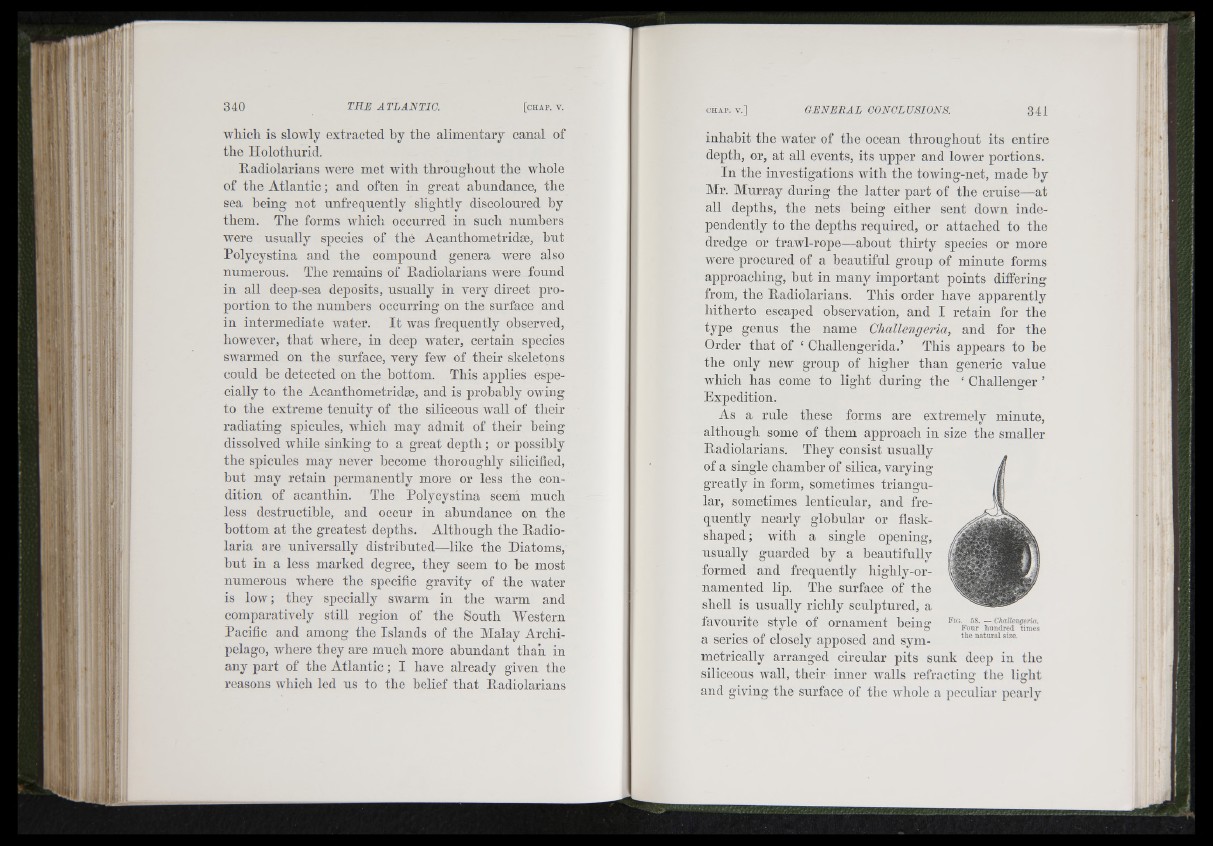
which is slowly extracted by tbe alimentary canal of
tbe Holotlmrid.
Radiolarians Avere met witb througbout tbe whole
of the Atlantic ; and often in great abundance, the
sea heing not unfrequently slightly discoloured by
them. The forms AA'hich occurred in such numbers
were usually species of the Acanthometridse, hut
Polycystina and the compound genera Avere also
numerous. The remains of Radiolarians Avere found
in all deep-sea deposits, usually in very direct proportion
to the numbers occurring on the surface and
in intermediate AA'ater. I t Avas frequently observed,
however, th a t where, in deep water, certain species
SAvarmed on the surface, very few of their skeletons
could be detected on the hottom. This applies especially
to the Acanthometridm, and is probably OAving
to the extreme tenuity of the siliceous Avail of their
radiating spicules, which may admit of their heing
dissolved while sinking to a great depth; or possibly
the spicules may never become thoroughly silicified,
but may retain permanently more or less the condition
of acanthin. The Polycystina seem much
less destructible, and occur in ahundance on the
bottom at the greatest depths. Although the P^adio-
laria are universally distributed—like the Diatoms,
h n t in a less marked degree, they seem to be most
numerous where the specific gravity of the water
is low ; they specially sAvarm in the warm and
comparatively still region of the South YYestern
Pacific and among the Islands of the Malay Archipelago,
Avhere they are much more ahundant than in
any part of the Atlantic ; I have already given the
reasons Avhich led us to the belief th a t Radiolarians
inhabit the Avater of the ocean throuErbout its entire
deptb, or, at all events, its upper and lower portions.
In tbe investigations wdth tbe towing-net, made by
Mr. Murray during the latter part of the cruise—at
all depths, the nets heing either sent down independently
to the depths required, or attached to the
dredge or trawl-rope—about thirty species or more
were procured of a beautiful group of minute forms
approaching, but in many important points diifering
from, the Radiolarians. This order have apparently
hitherto escaped observation, and I retain for the
type genus tbe name Cliallengeria, and for tbe
Order tbat of ‘ Challengerida.’ This appears to be
the only new group of bigber tban generic value
which has come to light during the ‘ Challenger ’
Expedition.
As a rule these forms are extremely minute,
although some of them approach in size the smaller
Radiolarians. Tbey consist usually
of a single chamber of silica, varying
greatly in form, sometimes triangular,
sometimes lenticular, and frequently
nearly globular or fiask-
sbaped; Avitb a single opening,
usually guarded by a beautifully
formed and frequently higbly-or-
namented lip. Tbe surface of the
shell is usually richly sculptured, a
favourite style of ornament being
a series of closely apposed and symmetrically
Fig. 58. — Challengeria.
Fo u r liundred times
the n atural size.
arranged circular pits sunk deep in tbe
siliceous Avail, their inner w'alls refracting tbe light
and giving tbe surface of tbe AA'hole a peculiar pearly